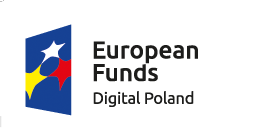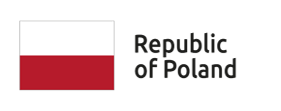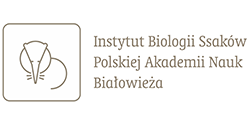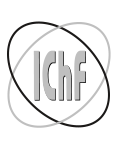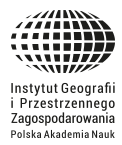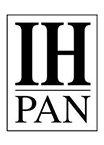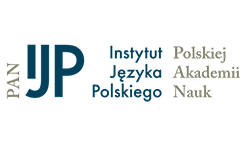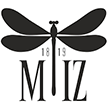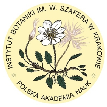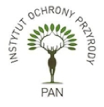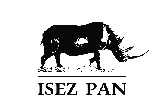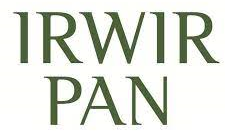- Search in all Repository
- Literature and maps
- Archeology
- Mills database
- Natural sciences
Advanced search
Advanced search
Advanced search
Advanced search
Advanced search

Object
Title: Impact of climate change on water resources in lowland Poland
Creator:
Świątek, Małgorzata
:
Autor
![]()
![]() ;
Walczakiewicz, Szymon
:
Autor
;
Walczakiewicz, Szymon
:
Autor
![]()
![]()
Date issued/created:
Resource type:
Subtitle:
Geographia Polonica Vol. 98 No. 1 (2025)
Publisher:
Place of publishing:
Description:
Abstract:
In this study, climate change was described by area-averaged annual precipitation totals and area-averaged mean annual temperature values in each catchment area, while water resources were described by mean monthly specific discharges in these catchments. Thirty-seven catchments located entirely in lowland areas of Poland were selected for the analysis. The research was conducted based on data from hydrological years 1961-2021. In order to compare changes in annual precipitation totals and mean annual air temperature values with changes in annual mean specific discharge, linear trends of the mentioned variables were determined. The effect of precipitation totals and air temperature on specific discharge in individual catchments was determined using multiple regression. Statistically significant increase in the value of mean annual air temperature was recorded for all studied catchment areas. In none of the examined catchments were the changes in annual precipitation totals statistically significant. Analysis of the time trends of specific discharge showed statistically significant decreases in their annual mean values in almost half of examined catchments. The correlations between specific discharge, air temperature and precipitation totals are not very strong, which is mainly due to the strong impact of other, anthropogenic factors on water management. The greatest negative changes are observed in the central part of Poland. Specific discharge is more strongly dependent on precipitation totals than on temperature, with the effect of air temperature only being reflected in the volume of water resources after a certain period of time.
References:
Banasik, K., & Hejduk, L. (2012). Long-term changes in runoff from a small agricultural catchment. Soil and Water Resources 7(2), 64-72. https://doi.org/10.17221/40/2011-swr
![]()
Baran Gurgul, K., Kołodziejczyk, K., & Rutkowska, A. (2022). Temporal and spatial variability of the mean river flow in Poland, regional approach. In B. Więzik (Ed.), Współczesne problemy gospodarowania zasobami wodnymi (pp. 5-18). Monografie Komitetu Gospodarki Wodnej PAN, 45.
Bednar-Frield, B., Biesbroek, R., & Schmidt, D. N. (Lead Authors). (2022). Europe. In H. Pörtner, D. Roberts, M. Tignor, P. Poloczanska, K. Mintenbeck, A. Alegría, … & B. Rama (Eds.) Climate change 2022: Impacts, adaptation and vulnerability. Working group II to contribution to the sixth assessment report of the International Panel on Climate Change (pp 551-712). Cambridge and New York: Cambridge University Press. https://doi.org/10.1017/9781009325844.015
![]()
Bisselink, B., Bernhard, J., Gelati, E., Adamovic, M., Guenther, S., Mentaschi, L., … & de Roo, A. (2020). Climate change and Europe's water resources. Luxembourg: Publications Office of the European Union. https://data.europa.eu/doi/10.2760/15553
![]()
Biuletyn Monitoringu Klimatu Polski. https://klimat.imgw.pl/pl/biuletyn-monitoring/
Bormann, H. (2009). Analysis of possible impacts of climate change on the hydrological regimes of different regions in Germany. Advances in Geosciences, 21, 3-11. https://doi.org/10.5194/adgeo-21-3-2009
![]()
Bormann, H. (2010). Runoff regime changes in German rivers due to climate changes. Erdkunde, 64(3), 257-279. https://doi.org/10.3112/erdkunde.2010.03.04
![]()
Caretta, M. A., Mukherji, A., Arfanuzzaman, M., Betts, R. A., Gelfan, A., Hirabayashi, Y. … & Supratid, S. (2022). Water. In H. Pörtner, D. Roberts, M. Tignor, P. Poloczanska, K. Mintenbeck, … & B. Rama (Eds.), Climate change 2022: Impacts, adaptation and vulnerability (pp 551-712). Working group II to contribution to the sixth assessment report of the International Panel on Climate Change, Cambridge University Press, Cambridge and New York. https://doi.org/10.1017/9781009325844.006
![]()
Choiński, A. (2017). Geneza i rozmieszczenie jezior. In P. Jokiel, W. Marszelewski, & J. Pociask-Karteczka, J. (Eds.), Hydrologia Polski (pp. 223-229). Warszawa: PWN.
Corine Land Cover (CLC). https://clc.gios.gov.pl/
Degirmendžić, J., Kożuchowski, K., & Żmudzka, E. (2004). Changes of air temperature and precipitation in Poland in the period 1951-2000 and their relationship to atmospheric circulation. International Journal of Climatology 24, 291-310. https://doi.org/10.1002/joc.1010
![]()
Detailed note from the 7th meeting of the Subcommittee (working group) for Eastern Greater Poland operating within the Monitoring Committee of the European Funds for Greater Poland 2021-2027 Program (hereinafter referred to as: MC FEW) - February 12, 2024 (in Polish). https://arrtransformacja.org.pl/vii-posiedzenie-podkomitetu-grupy-roboczej-ds-wielkopolski-wschodniej/
European Environment Agency. https://eea.europa.eu/
Eurostat (2024). https://ec.europa.eu/eurostat/statistics-explained/index.php?title=Water_statistics#Water_as_a_resource
Falarz, M., & Bednorz, E. (2021). Snow cover change. In M. Falarz (Ed.), Climate change in Poland. Past, present, future (pp. 375-389). Cham: Springer. https://doi.org/10.1007/978-3-030-70328-8_14
![]()
Grillakis, M. (2019). Increase in severe and extreme soil moisture droughts for Europe under climate change. Science of the Total Environment, 660, 1245-1255. https://doi.org/10.1016/j.scitotenv.2019.01.001
![]()
Ilnicki, P., Farat, R., Górecki, K., & Lewandowski, P. (2014). Impact of climatic change on river discharge in the driest region of Poland. Hydrological Sciences, 59(6), 1117-1134. https://doi.org/10.1080/02626667.2013.831979
![]()
Jakimavičius, D., Adžgauskas, G., Šarauskienė, D., & Kriaučiũnienė, J. (2020). Climate change impact on hydropower resources in gauged and ungauged Lithuanian river catchments. Water, 12. https://doi.org/10.3390/w12113265
![]()
JCW Powierzchniowe. http://karty.apgw.gov.pl:4200/jcw-powierzchniowe
Jokiel, P., & Bartnik, A. (2020). Ner - Monografia hydrologiczna niekochanej rzeki. Łódź: Uniwersytet Łódzki. https://doi.org/10.18778/8220-002-7
![]()
Kļaviņŝ, M., Rodinov, V., Timukhin, A., & Kokorīte, I. (2008). Patterns of river discharges in Latvia and the Baltic region. Baltica, 21(1-2), 41-49.
Kozek, M. (2018). Spatial variability of low flows in the upper Warta river catchment. Acta Scientiarum Polonorum - Seria Formatio Circumiectus, 17(3), 67-76. https://doi.org/10.15576/ASP.FC/2018.17.3.67
![]()
Krajewski, A., Sikorska-Senoner, A., Ranzi, R., & Banasik, K. (2019). Long-term changes of hydrological variables in a small lowland watershed in central Poland. Water, 11(3). https://doi.org/10.3390/w11030564
![]()
Kriauciuniene, J., Meilutyde-Barauskiene, D., Reihan, A., Koltsova, T., Lizuma, L., & Sarauskiene, D. (2012). Variability in temperature, precipitation and river discharge in the Baltic States. Boreal Environment Research, 17, 150-162.
Kubiak-Wójcicka, K., & Machula, S. (2020). Influence of climate changes on the state water resources in Poland and their usage. Geosciences, 10(8). https://doi.org/10.3390/geosciences10080312
![]()
Kundzewicz, Z., Zaleski, J., Nachlik, E., & Januchta-Szostak, A. (2021). Managing water - challenges for Poland. Nauka, 1, 79-102. https://doi.org/10.24425/nauka.2021.136305
![]()
Łupikasza, E., & Małarzewski, Ł. (2021). Precipitation change. In M. Falarz (Ed.) Climate change in Poland. Past, present, future (pp 349-373). Cham: Springer. https://doi.org/10.1007/978-3-030-70328-8_13
![]()
Mager, P., Kasprowicz, T., & Farat, R. (2009). Change of air temperature and precipitation in Poland in 1966-2006. In J. Leśny (Ed.), Climate change and agriculture in Poland - impacts, mitigation and adaptation measures. Acta Agrophysica, 169(1), 19-38.
Malinowska, M. (2015). Symptoms of climate change in Poland. In Z. Kordel, I. Josan, & T. Wiskulski (Eds.), Geography for society (pp 94-112). Oradea: Editura Universitӑţii din Oradea.
Malinowski, Ł., & Skoczko, I. (2018). Impacts of climate change on hydrological regime and water resources management of the Narev river in Poland. Journal of Ecological Engineering 19(4), 167-175. https://doi.org/10.12911/22998993/91672
![]()
Manual for the assessment of flowing waters based on the hydromorphological river index. http://www.gios.gov.pl/images/dokumenty/pms/monitoring_wod/Podrecznik_HIR.pdf
Marsz, A., Sobkowiak, L., & Styszyńska, A., & Wrzesiński, D. (2022). Causes and course of climate change and its hydrological consequences in the Greater Poland region in 1951-2020. Questiones Geographicae, 41(3), 183-206. https://doi.org/10.14746/quageo-2022-0033
![]()
Milly, P., Dunne, K., & Vecchia, A. (2005). Global pattern of trends in streamflow and water availability in changing climate. Nature, 438(17), 347-350. https://doi.org/10.1038/nature04312
![]()
Narkiewicz-Jodko, J. (1959). O przyczynach stepowienia Wielkopolski i roli zadrzewień śródpolnych w krajobrazie rolniczym. Ekologia Polska Seria B, V(4), 307-312.
Nowak, B., Nadolna, A., & Stanek, P. (2018). Evaluation of the potential for use of lakes in restoring water resources and flood protection, with the example of the Noteć Zachodnia River catchment (Gniezno Lakeland, Poland). Meteorology, Hydrology and Water Management, 6(2). https://doi.org/10.26491/mhwm/90604
![]()
Plunge, S., Gudas, M., & Povilaitis, A. (2022). Expected climate change impacts on surface water bodies in Lithuania. Ecohydrology & Hydrobiology, 22(2), 246-268. https://doi.org/10.1016/j.ecohyd.2021.11.004
![]()
Raczyński, K., & Dyer, J. (2020). Multi-annual and seasonal of low-flow river conditions in southeastern Poland. Hydrological Sciences Journal 65(15), 2561-2576. https://doi.org/10.1080/02626667.2020.1826491
![]()
Regulation of the Minister of the Environment of 9 November 2011 on the classification of the ecological status, ecological potential and chemical status of surface water bodies; Dz.U.2011.258.1549 (in Polish).
Rottler, E., Francke, T., Bürger, G., & Bronstert, A. (2020). Hydrology and Earth System Sciences, 24, 1721-1740. https://doi.org/10.5194/hess-24-1721-2020
![]()
Rutgersson, A., Jaagus, J., Schenk, F., & Stendel, M. (2014). Observed changes and variability of atmospheric parameters in the Baltic sea region during the last 200 years. Climate Research 61, 177-190. https://doi.org/10.3354/cr01244
![]()
Seager, R., & Vecchi, G. (2010). Greenhouse warming and 21st century hydroclimate of southwestern North America. PNAS, 107(50), 21 277-21 282. https://doi.org/10.1073/pnas.0910856107
![]()
Somorowska, U. (2023). Warming air temperature impacts snowfall patterns and increases cold-season baseflow in the Liwiec river basin (Poland) of the central European lowland. Resources, 12(2), 18. https://doi.org/10.3390/resources12020018
![]()
Somorowska, U. (2024). Earlier emergence of winter-spring maximum streamflow across Poland, 1981-2020. Acta Geographica Lodziensia, 115, 109-124. https://doi.org/10.26485/AGL/2024/115/6
![]()
Stonevičius, E., Valiuškevič, Rimkus, E., & Kažys, J. (2014). Climate induced changes of Lithuanian rivers runoff in 1960-2009. Water quality and protection: Environmental Aspects, 41(5), 592-603. https://doi.org/10.1134/S0097807814050133
![]()
Szwed, M, Karg, G., Pińskwar, I., Radziejewski, M., Graczyk, D., Kędziora, A., & Kundzewicz, Z. (2010). Climate change and its effect on agriculture, water resources and human health sectors in Poland. Natural Hazards and Earth System Sciences, 10, 1725-1737. https://doi.org/10.5194/nhess-10-1725-2010
![]()
Świątek, M., Walczakiewicz, Sz. (2022). Changes in specific runoff in river catchments of Western Pomerania versus climate change. Geographia Polonica, 95(1), 25-52. https://doi.org/10.7163/Gpol.0225
![]()
Tomczyk, A., Bednorz, E., & Szyga-Pluta, K. (2021). Changes in air temperaturę and snow cover in winter in Poland. Atmosphere 12(1), 68. https://doi.org/10.3390/atmos12010068
![]()
Urbański, J. (1956). Fauna jako wskaźnik stepowienia Wielkopolski. Zeszyty Problemowe Postępów Nauk Rolniczych, 7, 66-78.
Ustrnul, Z., Wypych, A., Czekierda, D. (2021). Air temperature change. In M. Falarz (Ed.), Climate change in Poland. Past, present, future (pp 349-373). Cham: Springer. https://doi.org/10.1007/978-3-030-70328-8_11
![]()
Volchak, A. A., & Bulskaya, I. V. (2017). Water resource of Belarus under changing climate conditions: Current status and prognosis. Environmental Processes, 4 (Suppl 1), 125-136. https://doi.org/10.1007/s40710-017-0231-1
![]()
Wibig, J. (2009). The variability of daily precipitation totals in Poland (1951-2000). Geographia Polonica, 82(1), 21-32.
![]()
Wibig, J., & Jedruszkiewicz, J. (2023). Recent changes in the snow cover characteristics in Poland. International Journal of Climatology, 43, 6925-6938. https://doi.org/10.1002/joc.8178
![]()
Wojkowski, J., Wałęga, A., Młyński, D., Radecki-Pawlik, A., & Lepeška, T. (2022). Influence of land use and land cover on landscape hydric potential and trends of flows. Monografie Komitetu Gospodarki Wodnej PAN, 45, 59-72.
Wrzesiński, D., Marsz, A., Sobkowiak, L., & Styszyńska, A. (2022). Response of low flows of Polish rivers to climate change in 1987-1989. Water, 14, 2780. https://doi.org/10.3390/w14182780
![]()
Wrzesiński, D., & Sobkowiak, L. (2018). Detection of changes in flow regime of rivers in Poland. Journal of Hydrology and Hydromechanics, 66(1), 55-64. https://doi.org/10.1515/JOHH-2017-0045
![]()
Wrzesiński, D., Sobkowiak, L., Mares, I., Dobrica, V., & Mares, C. (2023). Variability of river runoff in Poland and its connection to solar variability. Atmosphere, 14, 1184. https://doi.org/10.3390/atmos14071184
![]()
Relation:
Volume:
Issue:
Start page:
End page:
Detailed Resource Type:
Resource Identifier:
oai:rcin.org.pl:244718 ; 0016-7282 (print) ; 2300-7362 (online) ; 10.7163/GPol.0290
Source:
CBGiOS. IGiPZ PAN, call nos.: Cz.2085, Cz.2173, Cz.2406 ; click here to follow the link
Language:
Language of abstract:
Rights:
Creative Commons Attribution BY 4.0 license
Terms of use:
Copyright-protected material. [CC BY 4.0] May be used within the scope specified in Creative Commons Attribution BY 4.0 license, full text available at: ; -
Digitizing institution:
Institute of Geography and Spatial Organization of the Polish Academy of Sciences
Original in:
Projects co-financed by:
European Union. European Regional Development Fund ; Programme Innovative Economy, 2010-2014, Priority Axis 2. R&D infrastructure
Access:
Object collections:
- Digital Repository of Scientific Institutes > Partners' collections > Institute of Geography and Spatial Organization PAS (IGiPZ PAN) > Publications of IGiPZ PAN and employees
- Digital Repository of Scientific Institutes > Partners' collections > Institute of Geography and Spatial Organization PAS (IGiPZ PAN) > Library > Series/Journals/Periodics
- Digital Repository of Scientific Institutes > Literature > Journals/Articles
Last modified:
Apr 2, 2025
In our library since:
Apr 2, 2025
Number of object content downloads / hits:
33
All available object's versions:
https://rcin.org.pl./publication/281452
Show description in RDF format:
Show description in RDFa format:
Show description in OAI-PMH format:
| Edition name | Date |
|---|---|
| Świątek M.,Walczakiewicz Sz.: Impact of climate change on water resources in lowland Poland | Apr 2, 2025 |
Objects Similar
Świątek, Małgorzata
Szafrańska, Ewa
Śleszyński, Przemysław
Kawecka-Endrukajtis, Barbara Tuszyńska-Rękawek, Halina Sielużycka, Jadwiga

 INSTYTUT ARCHEOLOGII I ETNOLOGII POLSKIEJ AKADEMII NAUK
INSTYTUT ARCHEOLOGII I ETNOLOGII POLSKIEJ AKADEMII NAUK
 INSTYTUT BADAŃ LITERACKICH POLSKIEJ AKADEMII NAUK
INSTYTUT BADAŃ LITERACKICH POLSKIEJ AKADEMII NAUK
 INSTYTUT BADAWCZY LEŚNICTWA
INSTYTUT BADAWCZY LEŚNICTWA
 INSTYTUT BIOLOGII DOŚWIADCZALNEJ IM. MARCELEGO NENCKIEGO POLSKIEJ AKADEMII NAUK
INSTYTUT BIOLOGII DOŚWIADCZALNEJ IM. MARCELEGO NENCKIEGO POLSKIEJ AKADEMII NAUK
 INSTYTUT BIOLOGII SSAKÓW POLSKIEJ AKADEMII NAUK
INSTYTUT BIOLOGII SSAKÓW POLSKIEJ AKADEMII NAUK
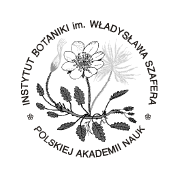 INSTYTUT CHEMII FIZYCZNEJ PAN
INSTYTUT CHEMII FIZYCZNEJ PAN
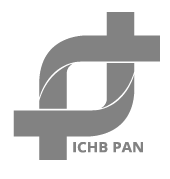 INSTYTUT CHEMII ORGANICZNEJ PAN
INSTYTUT CHEMII ORGANICZNEJ PAN
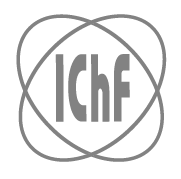 INSTYTUT FILOZOFII I SOCJOLOGII PAN
INSTYTUT FILOZOFII I SOCJOLOGII PAN
 INSTYTUT GEOGRAFII I PRZESTRZENNEGO ZAGOSPODAROWANIA PAN
INSTYTUT GEOGRAFII I PRZESTRZENNEGO ZAGOSPODAROWANIA PAN
 INSTYTUT HISTORII im. TADEUSZA MANTEUFFLA POLSKIEJ AKADEMII NAUK
INSTYTUT HISTORII im. TADEUSZA MANTEUFFLA POLSKIEJ AKADEMII NAUK
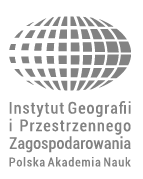 INSTYTUT JĘZYKA POLSKIEGO POLSKIEJ AKADEMII NAUK
INSTYTUT JĘZYKA POLSKIEGO POLSKIEJ AKADEMII NAUK
 INSTYTUT MATEMATYCZNY PAN
INSTYTUT MATEMATYCZNY PAN
 INSTYTUT MEDYCYNY DOŚWIADCZALNEJ I KLINICZNEJ IM.MIROSŁAWA MOSSAKOWSKIEGO POLSKIEJ AKADEMII NAUK
INSTYTUT MEDYCYNY DOŚWIADCZALNEJ I KLINICZNEJ IM.MIROSŁAWA MOSSAKOWSKIEGO POLSKIEJ AKADEMII NAUK
 INSTYTUT PODSTAWOWYCH PROBLEMÓW TECHNIKI PAN
INSTYTUT PODSTAWOWYCH PROBLEMÓW TECHNIKI PAN
 INSTYTUT SLAWISTYKI PAN
INSTYTUT SLAWISTYKI PAN
 SIEĆ BADAWCZA ŁUKASIEWICZ - INSTYTUT TECHNOLOGII MATERIAŁÓW ELEKTRONICZNYCH
SIEĆ BADAWCZA ŁUKASIEWICZ - INSTYTUT TECHNOLOGII MATERIAŁÓW ELEKTRONICZNYCH
 MUZEUM I INSTYTUT ZOOLOGII POLSKIEJ AKADEMII NAUK
MUZEUM I INSTYTUT ZOOLOGII POLSKIEJ AKADEMII NAUK
 INSTYTUT BADAŃ SYSTEMOWYCH PAN
INSTYTUT BADAŃ SYSTEMOWYCH PAN
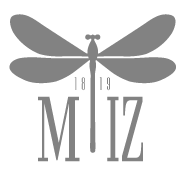 INSTYTUT BOTANIKI IM. WŁADYSŁAWA SZAFERA POLSKIEJ AKADEMII NAUK
INSTYTUT BOTANIKI IM. WŁADYSŁAWA SZAFERA POLSKIEJ AKADEMII NAUK




